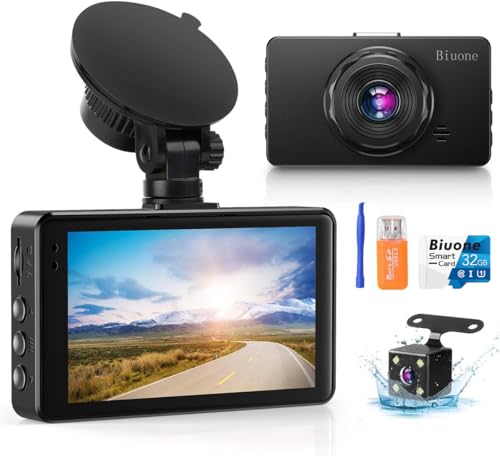Getting a handle on basic camera settings is crucial if you want to take your photography to the next level. Understanding these settings helps you control the look and feel of your photos. Let’s break down the essentials you need to know for your camera techniques.
1. Exposure: This is all about how much light hits your camera sensor. It involves three key elements: aperture, shutter speed, and ISO. A well-balanced exposure makes colors pop and details sharp, while overexposure or underexposure can ruin your shots.
2. Aperture: This setting affects how much light enters your camera and controls the depth of field. A lower f-stop number means a larger aperture, resulting in a blurry background that's perfect for portraits. A higher f-stop gives you a sharper focus across the image, which is great for landscapes.
3. Shutter Speed: This determines how long your camera's shutter stays open to let in light. Fast shutter speeds freeze motion, making them ideal for sports or action shots. Slow speeds can create beautiful motion blur, which adds a dynamic feel to your images.
4. ISO: Adjusting your ISO changes your camera's sensitivity to light. A low ISO number is great for bright conditions, while a higher ISO helps you shoot in low light. Just keep in mind that higher ISO can introduce noise, making your photos look grainy.
Mastering these basic camera settings is a game changer for your camera techniques. Once you get comfortable with adjusting them, you can start capturing those stunning photos you've always wanted!
Composing Stunning Shots Every Time
Getting the perfect shot isn't just about having the latest camera gear; it's all about nailing those essential camera techniques. Whether you’re capturing a stunning sunset or that candid moment with friends, a little knowledge can go a long way. Here’s how to compose breathtaking shots every time.
First off, pay attention to your framing. Try the rule of thirds—imagine your image is divided into three equal parts both horizontally and vertically. Place your subject along those lines or at their intersections to create a balanced look. It’s a simple trick, but it can really add depth to your photos.
Next, don’t forget about leading lines. Use natural pathways like roads, fences, or rivers to draw the viewer's eye right to your subject. This technique can guide the viewer into the scene, making your images feel more inviting. Experiment with angles, too. Sometimes a shot taken from a low angle or a bird’s-eye view can give your photo a whole new perspective.
Lighting is key in photography. Try capturing your shots during the golden hour—right after sunrise or before sunset. The natural light gives your images a warm glow that makes everything look a bit more magical. If you can, avoid harsh midday sunlight, as it can create unwanted shadows and highlights.
Lastly, don’t shy away from taking lots of shots. With digital cameras, you can snap away without worrying about wasting film. Experiment with your settings and compositions. You’ll be surprised by the variety of stunning images you can create just by trying different camera techniques. Happy shooting!
Dual Dash Cam, 1080P FHD Front and Rear Cameras
Capture crystal clear footage from the front and back with our Dual Dash Cam's 1080P FHD Front and Rear Cameras
Product information
$69.99 $38.84
Product Review Score
4.53 out of 5 stars
216 reviewsProduct links
Mastering Light for Amazing Photos
Getting the lighting just right can turn a good photo into a great one. Whether it's the golden hour glow or the soft light of a cloudy day, mastering light is one of the best camera techniques you can learn. It really sets the mood and brings out colors in your shots.
First, let’s talk about natural light. Early mornings and late afternoons are the best times for shooting outdoors. The light is warm and soft, which makes everything look more gorgeous. Try pointing your camera towards the light source instead of away from it. This can create some stunning shadows and highlights!
When it comes to artificial light, be mindful of your surroundings. A simple lamp can create a cozy vibe, while harsh fluorescent lights can wash out your subject. You’ll want to experiment. Move around, adjust your settings, and see what works. One fun tip is to use a reflector. It bounces light onto your subject, giving you a nice, even glow.
Don't forget about the power of shadows! They can add depth and drama to your images. Play around with different angles and positions. You might be surprised by what you can create just by changing your perspective.
Keep practicing these camera techniques, and you’ll see your photos evolve. The right light can make all the difference, so don’t be afraid to experiment and find what feels right for you!
Wireless Backup Camera with 5'' Monitor Kit
See everything behind you with this easy-to-install wireless backup camera and bright 5-inch monitor
Product information
$149.99 $88.99
Product Review Score
4.7 out of 5 stars
219 reviewsProduct links
Editing Tips to Enhance Your Images
Editing your images can sometimes feel like a daunting task, but it’s actually a great way to enhance your photos and make them shine. Whether you’re a newbie or a seasoned snapper, knowing a few editing tips can take your camera techniques to another level. Let’s dive into some easy ways to make your images pop.
First off, don’t underestimate the power of cropping. Sometimes, a simple crop can change the entire focus of your photo. Get rid of distractions in the background or highlight your main subject. Most editing apps have simple crop tools that let you adjust the frame without any hassle.
Next, play with brightness and contrast. Brightness can bring more life into your photos, while increasing contrast can help your subject stand out. Just a few tweaks can transform a flat image into one that grabs attention. Don’t overdo it; subtle changes often lead to the best results.
Don’t forget about color correction! Use your editing software to fix any color casts and enhance the overall color balance. Warm tones can make a sunset photo feel cozy, while cooler tones can give your landscape a more tranquil vibe. The right colors can really emphasize your camera techniques.
Lastly, consider adding filters or presets. They can give your photos a unique vibe quickly and easily. Just remember to keep it balanced—too many filters can overwhelm your image. Use them to complement your work, not overshadow it. Happy editing!






